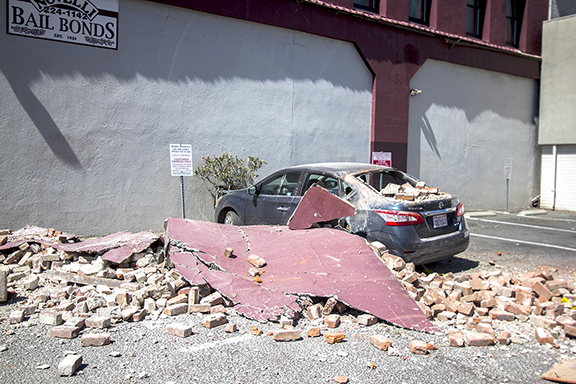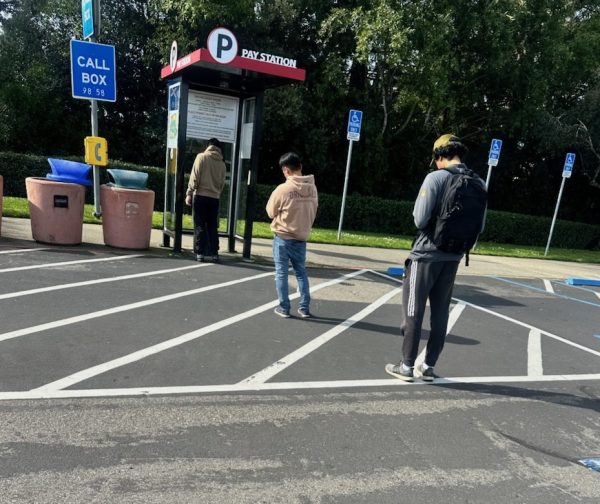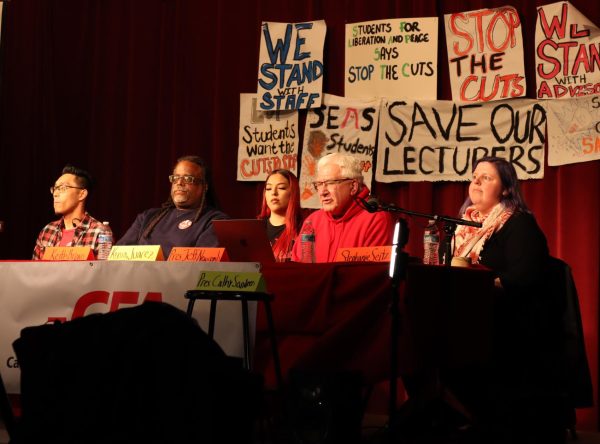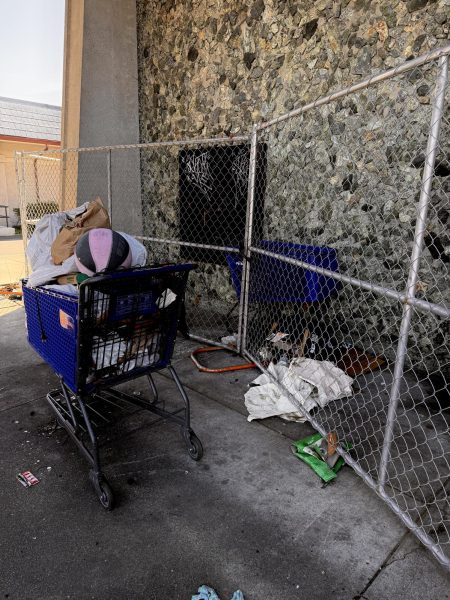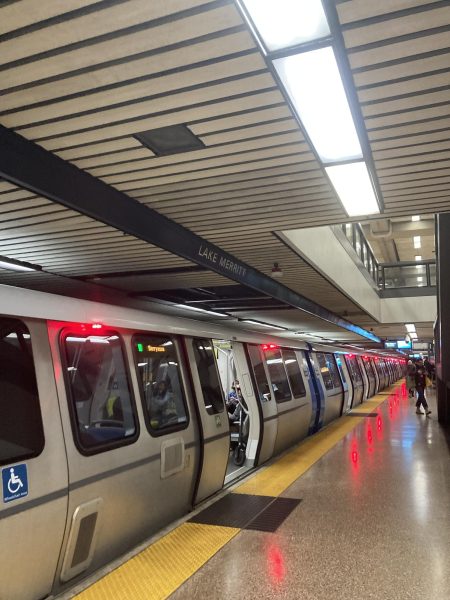Fault research shakes up Hayward
If the proverbial tree falls in a forest but no one’s around to hear it, it might not make a sound, but it’s still a hazard. If the tree has the potential to fall on a person, Luther Strayer considers it a risk.
Strayer, a structural geologist and Cal State East Bay’s associate professor of earth and environmental sciences, used this analogy to describe the motivation behind an experiment that will set off around 25 micro earthquakes around Hayward and neighboring cities San Leandro and Castro Valley next Friday to measure the seismic waves created by the mini quakes.
Strayer said the purpose of the experiment is to determine the geometry of fault lines in the area and how they intersect.
Metaphorically speaking, the tree in the forest is the Hayward Fault — a branch of the California San Andreas fault system — that runs from San Pablo to Fremont and passes through Berkeley, Oakland and Hayward, according to the U.S. Geological Survey.
The Hayward Fault is credited with the 3.5 magnitude earthquake that occurred out of Piedmont last Tuesday. There was no immediate injuries or damage reported. It straddles Cal State East Bay alongside the Chabot Fault, which runs concurrent and is currently dormant.
On Friday, 12 East Bay students will join a team led by Strayer and Rufus Catchings, a geophysicist from the USGS Menlo Park who collaborated with Strayer on a similar research project when Warren Hall, East Bay’s former administration building, was demolished in 2013 due to “seismic vulnerability.”
The group will drill holes measuring four inches in diameter and 30-40 feet deep into the earth, spaced 1,000 meters apart, some along the fault line but most not, according to Catchings. Explosive charges of various sizes, called “shots” will be placed in the bottom of the holes, which will then be filled in with gravel and native dirt. When detonated, they will simulate a small earthquake of about .05 magnitude, said Strayer. The earthquakes are too small to be felt unless one is standing directly near the detonation.
The detonations will be set off anywhere from midnight to 5 a.m. by three teams of four to six people. “We set them off in the middle of the night because that’s when the world is quiet,” said Strayer. Seismometers, which Strayer said resemble a beer can wrapped in plastic, tape and orange wires, will be placed just below the surface of these holes to measure the seismic waves created by the mini quakes.
Catchings said the team is measuring the shape and velocity of quakes, fault locations and connections between various faults, as well as looking for unrecognized faults in the area.
The USGS reports that the last major earthquake that occurred on the Hayward Fault was in 1868. Measuring in at a 6.8 magnitude, the earthquake killed 30 people, resulted in $350,000 in damages, the equivalent of millions in modern-day dollars, and caused 20 miles of surface rupture, or cracking in the ground.
The size of an earthquake is determined by the fault size and the length of slip — when two sections of earth slide against each other on a fault line, according to the USGS.
“We’re just trying to understand what the hazard is and what were living near,” said Strayer. “We should evaluate these faults close to active faults that have potential to slip in a large earthquake.”
Geologic research conducted by James Lienkaemper, a scientist with the USGS Earthquake Hazards Program, indicates that the Bay Area is due for another large earthquake. The average time span between the last five earthquakes was 140 years, and there is a 29 percent chance of another large earthquake occurring on the southern portion of the Hayward Fault within the next 30 years, according to Lienkaemper.
While scientists can calculate probabilities about the frequency of large earthquakes based on past occurrences, they don’t yet have the capabilities of predicting exactly when they will happen, Strayer clarified. The goal of the experiment isn’t to characterize or map out the next “big one,” but to better understand the composition and geometry of the faults.
Strayer explained that the Hayward Fault is just one of many in a zone that contains “a whole mess of other faults.” He suspects that they are connected at approximately five to eight kilometers — or three to five miles — deep, but there hasn’t been enough research to reveal how they are connected.
Catchings said that if they are directly connected, the Hayward Fault zone is wider than currently believed. If that is the case, strong shaking may be distributed over a wide zone, not just along the active trace of the Hayward Fault.
“The locations of faults is exceedingly important. From seismicity, we can get a good idea of the location of the active trace of the Hayward Fault, but there may be additional strands of the fault that we do not know about,” he said. “This type of seismic imaging survey can help to identify such faults and pinpoint their locations.”
“I suspect that for the Hayward Fault our greatest challenge is learning how to protect ourselves by taking practical steps in our homes and communities,” said Lienkaemper. “Some improvements can be made by making more detailed observations on faults, such as better earthquake histories.”
Catchings said that this type of survey will help homeowners, businesses, and governments prepare for future earthquakes within the Hayward Fault zone.
The current research was made possible by Strayer’s grant for $83,013 that the USGS Earthquake Hazards Program approved last year.
Strayer and Catchings conducted a sister experiment along the West Napa Fault last week, a region that sparked interest after a 6.0 magnitude earthquake shook South Napa in Aug. 2014, causing one fatality and $500 million in damages, according to the USGS.
The earthquake also caused eight miles of surface rupture, 18 inches of surface slip and 14 inches of afterslip, or slip on the fault after an earthquake, according to the USGS. Strayer said that the effects of the Napa earthquake were more severe than expected for one of that size, so the team is conducting primary research to better understand the geometry of the valley.The data on the Napa and Hayward faults will be released into the USGS database a year from now, said Strayer. It will
The data on the Napa and Hayward faults will be released into the USGS database a year from now, said Strayer. It will then undergo an interpretation process by scientists in the field. “It may be 10 years before this research ends up helping someone…but this thing has to happen; it’s important and we’ve got to do it,” said Strayer.


